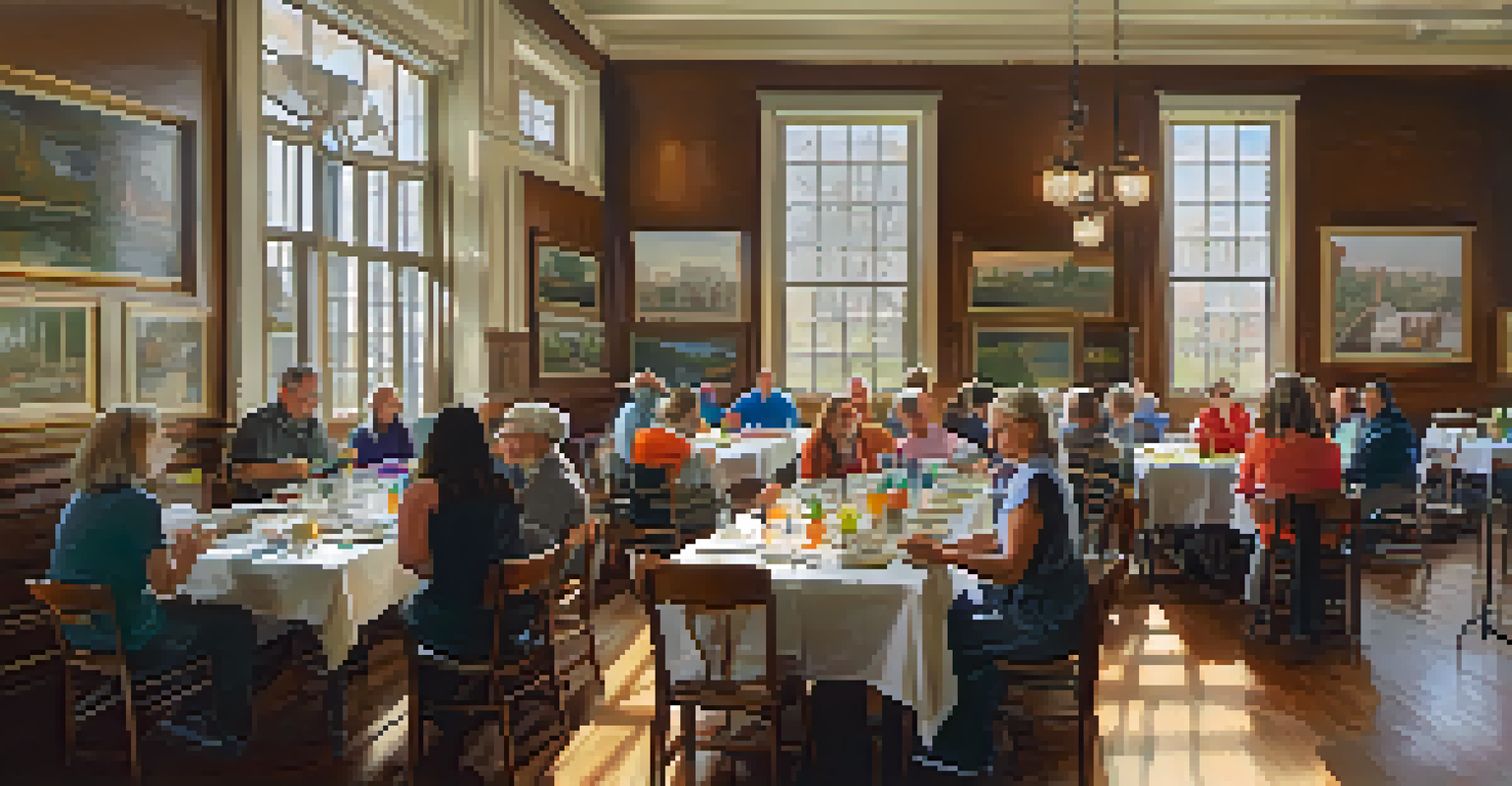How to Tell the Story of a Historic Property During Renovation

Understanding the Historical Significance of the Property
Every historic property has a story to tell, rich with its own unique past. Before diving into renovations, it's essential to research and understand the property's history. This could involve looking into old blueprints, photographs, or even speaking with local historians.
Preservation is a link to the past, but it also allows us to build the future.
By grasping the significance of the property, you can identify key elements that should be preserved. For instance, if the building was a community hub, maintaining its original features could evoke nostalgia and connection for those familiar with its history.
Additionally, sharing intriguing anecdotes about the property can engage potential visitors or stakeholders. Think of it as building a bridge between the past and present, inviting everyone to appreciate the journey the property has taken.
Engaging the Community in the Renovation Process
Involving the local community during renovations can create a sense of ownership and pride. Hosting town hall meetings or workshops where residents can share their memories and ideas about the property fosters a collaborative spirit. This input can lead to more thoughtful renovation decisions that resonate with the community.

Moreover, highlighting local stories and experiences can add depth to the property's narrative. For example, if a local artist once worked in the space, showcasing their contributions can create a more profound connection for visitors.
Understand Property's Historical Value
Researching a property's history helps preserve key elements that resonate with the community.
Ultimately, community engagement not only enriches the renovation process but also helps preserve the legacy of the property. When people feel engaged, they are more likely to support and promote the renovated space.
Documenting the Renovation Journey Visually
Visual storytelling can be a powerful tool in conveying the renovation journey. Taking before-and-after photos, documenting changes, or even creating time-lapse videos can illustrate the transformation in an engaging way. Sharing these visuals on social media can attract interest and keep the audience updated.
History is not a burden on the memory but an illumination of the soul.
Consider creating a dedicated blog or social media account to showcase the renovation process. This not only builds anticipation but also serves as a digital archive of the property’s evolution.
Incorporating visual elements can also make the story more relatable. People love to see progress and change, and these visuals can evoke emotions that words alone might not capture.
Preserving Architectural Elements During Renovation
One of the most crucial aspects of telling a historic property's story is preserving its architectural features. Elements like original moldings, staircases, or windows are not just beautiful; they speak volumes about the craftsmanship of the era. These features should be highlighted and restored whenever possible to maintain authenticity.
In some cases, it might be necessary to replicate certain elements that have worn away. Doing so can help retain the property's character while ensuring modern safety and functionality. It’s about finding the right balance between preservation and renovation.
Engage Community in Renovations
Involving locals fosters pride and ensures renovation decisions reflect their memories and needs.
By showcasing these preserved elements in the renovation narrative, you can educate visitors about the historical significance of the architecture. This enhances their appreciation for the property and its story.
Integrating Modern Amenities with Historical Charm
While preserving history is vital, integrating modern amenities is equally important for usability. The goal is to create a space that honors the past while serving contemporary needs. Think about how features like energy-efficient systems or smart technology can be seamlessly incorporated without compromising the building's character.
For example, installing discreet heating solutions or modern lighting that complements the historic aesthetics can enhance comfort without detracting from the property's charm. This approach can also attract a broader audience, as people appreciate the convenience of modern living.
Ultimately, the story of the renovation becomes one of evolution, showing how the property adapts to present-day requirements while respecting its origins.
Creating Educational Opportunities from the Renovation
A renovation project is an excellent opportunity to educate the public about the property's history and significance. Organizing workshops, guided tours, or talks can share insights into the restoration process and the history behind it. This not only informs but also engages the community in a meaningful way.
Interactive elements, like displays or installations that explain the property's past, can enhance visitor experience. For example, you might include a timeline of significant events that occurred within the building, creating a narrative thread that visitors can follow.
Combine Modern and Historic Features
Integrating modern amenities while preserving historical charm creates a usable and inviting space.
By fostering education, you create a deeper connection between the property and its audience. This enriched understanding can lead to greater appreciation and support for the property long after the renovation is complete.
Marketing the Renovated Property with a Compelling Story
Once the renovations are complete, it's time to share the story with the world. Crafting a compelling marketing narrative around the property can attract visitors and potential investors alike. Highlighting the journey of renovation, the history, and the community involvement can create an emotional connection with your audience.
Utilizing various marketing channels, such as social media, press releases, and local events, can spread the word effectively. Featuring testimonials from community members or visitors can add authenticity to your message.

Remember, storytelling doesn't stop after the renovation; it should be an ongoing process. Continually sharing updates, events, or new features can keep the story alive and maintain interest in the property.